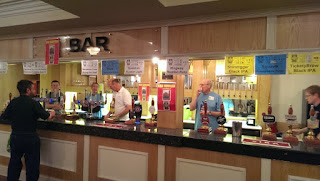Market research organisation Mintel has recently published an interesting report on pubgoing in Britain. Amongst the results are that one in five people visit a pub each week, which raises the obvious question why four in five don’t. It would be illuminating to compare this with the situation thirty years ago.
It also stated that 20% would be more likely to visit pubs if drinks were cheaper, while 54% could be encouraged if pubs offered more appealing food. 72% of those dining in pubs opted for homemade dishes, and 54% preferred dishes with locally sourced ingredients, with 38% picking those with seasonal components.
But all of this has to be taken with a large pinch of salt. Asking people what they would like to see in a pub is very different from what would actually motivate them to go to pubs more. As I argued here, these surveys often give disproportionate weight to the opinions of those who rarely visit pubs anyway. Before the smoking ban, large numbers of people said in surveys that they would go to pubs more often if smoking was prohibited, but in practice virtually none did. And going every three months rather than every six is unlikely to do much to help the pub trade.
There’s a well-known case study where McDonalds introduced a range of “healthier” menu options in response to customer research, only to find that sales fell well below projections. It seems that many people are happy to say what they would like to see in pubs, but that doesn’t mean they would actually consume these products, or that their availability would make them visit more often. “I think pubs should stock more alcohol free beers, but that doesn’t mean I will actually drink them.”
In market research it is far more important to track how people actually behave rather than what they say they will do viewed through a filter of political correctness. Most people surveyed would probably say that pubs should offer a wider range of soft drinks, and charge less for them, but it’s very doubtful whether that would make much difference to whether or not they chose to visit.
















